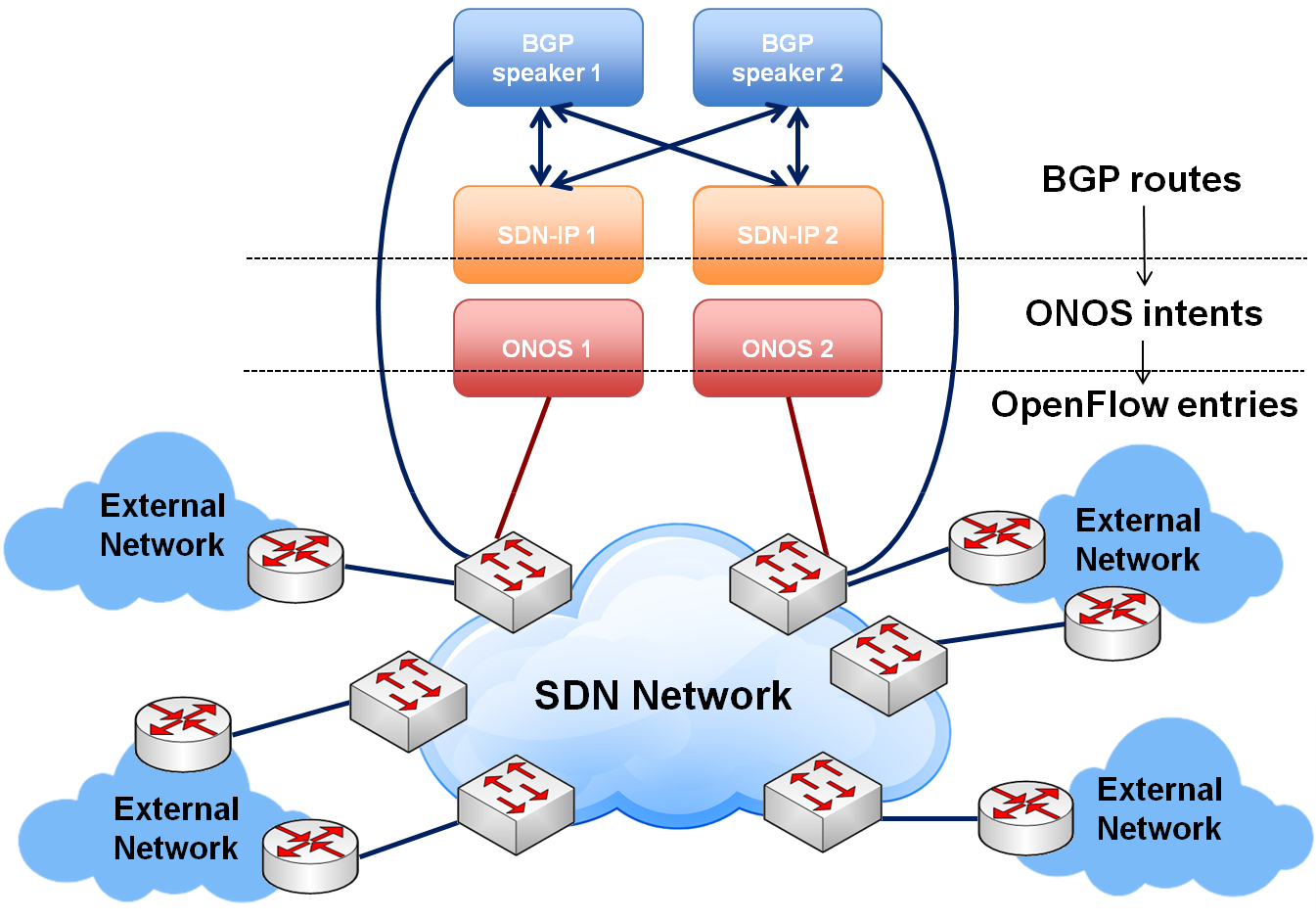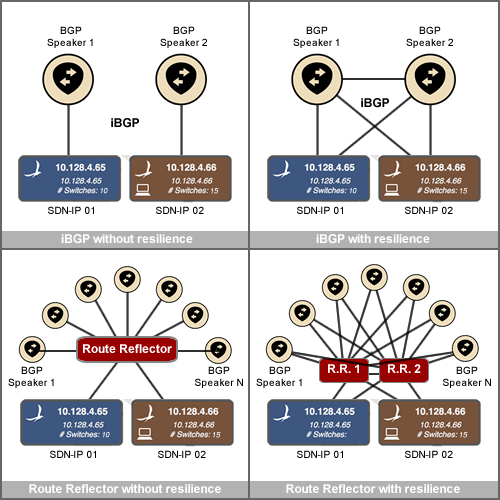...
SDN-IP allows an SDN network to peer and exchange traffic with adjacent external network using the BGP routing protocol.
FIGURE 1 The following figure shows the various elements in the SDN-IP network model.
- The most fundamental building block is, of course, the SDN network. This is the network that is controlled by ONOS and will use SDN-IP to communicate with the outside world.
- The network is controlled by a cluster of ONOS instances (one or more).
- SDN-IP runs as an application on a subset of ONOS instances
- External BGP routers are connected at the edge of the SDN network. These are routers belonging to other administrative domains that will peer with the SDN network through BGP. The SDN network needs to have direct (not routed) IP connectivity to each external router it needs to peer with.
- Inside the SDN network there are one or more internal BGP speakers. There are no specific requirements on the implementation of the BGP speakers - as long as they support both external BGP (eBGP) and internal BGP (iBGP) peering sessions they will work. For our testing and deployments we use open-source software routers such as BIRD or Quagga. The internal BGP speakers peer in two different ways:
- Each BGP speaker must have at least one connection to the SDN data plane network. The BGP speaker will peer with external BGP routers over this connection using eBGP.
- Each BGP speaker also needs to peer with each SDN-IP instance using iBGP so it can relay routes to the SDN-IP instances. The connectivity for this peering must be out-of-band of the data plane.
...
There are no strict requirements on how the BGP topology should be set up, as long as each SDN-IP instance is able to receive all routes advertised to the SDN network through iBGP. In saying that, there are recommended deployment scenarios that we use and have tested thoroughly.
FIGURE 2 shows The following figure shows an example BGP configuration.
The icons show various nodes in the network and the lines show BGP peering sessions. Black lines are eBGP sessions between an internal BGP speaker and an external BGP router, and red lines are iBGP sessions amongst BGP speakers and SDN-IP instances.
...
Inside the network the BGP speakers peer with SDN-IP instances (running on ONOS) using iBGP. SDN-IP is a passive iBGP peer - it listens to BGP updates but never advertises updates of its own. iBGP peering sessions within the network can be set up in multiple ways. The easiest way is to have a full mesh of iBGP peering sessions between the BGP speakers and the SDN-IP instances. This can be seen with the red iBGP peering sessions in the figure. In this way, all BGP nodes within the network can learn all the routes. Note it is not necessary (or possible) to have iBGP sessions between two SDN-IP instances, because the SDN-IP instances never advertise routes of their own.
FIGURE 3 shows a A variety of examples of different iBGP topologies are shown in the following figure.
Router Abstraction
sdfdsfds
...


